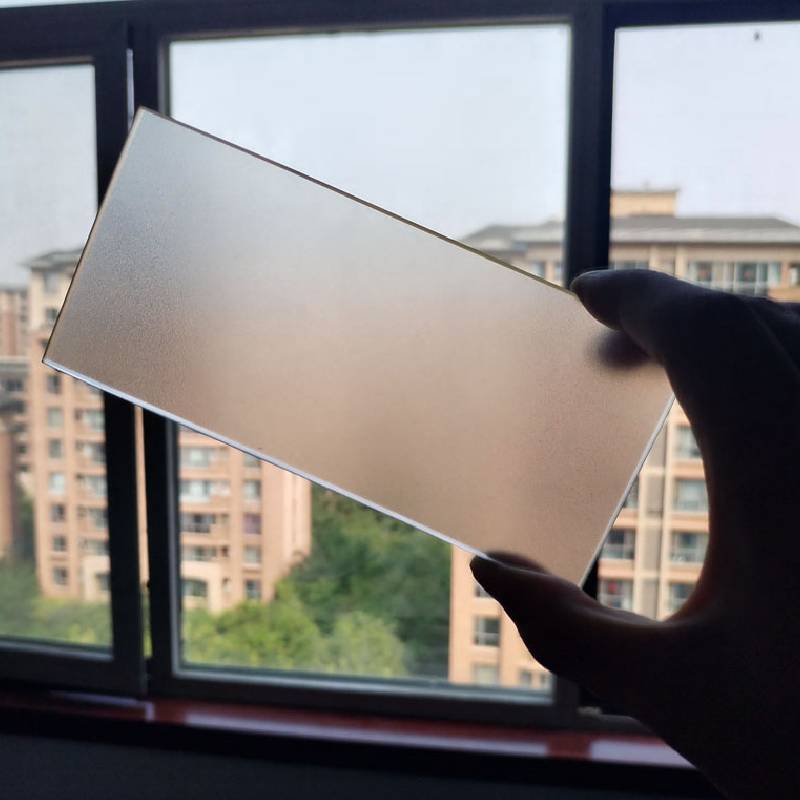Ribbed Tempered Glass An Innovative Solution for Modern Architecture
In the world of architectural design and construction, the demand for innovative materials that offer both aesthetic appeal and functional benefits is ever-growing. Among these materials, ribbed tempered glass has emerged as a favored option, combining durability with unique visual characteristics. This article delves into the attributes, applications, and advantages of ribbed tempered glass, showcasing why it has become a go-to choice for architects and builders alike.
What is Ribbed Tempered Glass?
Ribbed tempered glass is a type of glass that features a ridged or textured surface, which is achieved through a specific manufacturing process. The term tempered refers to the treatment that the glass undergoes to enhance its strength and resilience. During the tempering process, the glass is heated to high temperatures and then rapidly cooled. This treatment increases the overall strength of the glass, making it much more resistant to impact and thermal stress compared to regular glass.
The ribbed texture is not merely for aesthetics; it plays an essential role in how the glass interacts with light. The ridges can diffuse light, creating a softer glow in spaces and reducing glare. This characteristic is particularly advantageous in public buildings or commercial spaces where natural light is desirable but must be moderated.
Applications of Ribbed Tempered Glass
The versatility of ribbed tempered glass lends itself to a variety of applications across different sectors. In residential architecture, it is frequently used in shower enclosures, windows, and doors. The textured surface provides privacy while still allowing natural light to permeate the space, making it ideal for bathrooms and secluded areas.
In commercial settings, ribbed tempered glass is often employed in office partitions, façade designs, and skylights. Its strength makes it suitable for high-traffic environments where durability is a concern. Additionally, the aesthetic quality of ribbed glass adds a modern and sophisticated touch, elevating the overall design of the building.
ribbed tempered glass
Moreover, ribbed tempered glass is also utilized in furniture and interior design. Items such as tabletops, room dividers, and decorative panels benefit from the unique look and functional advantages of this material, serving both practical and decorative purposes in contemporary interiors.
Advantages of Ribbed Tempered Glass
There are numerous advantages to using ribbed tempered glass, making it a preferred choice for architects and builders. One of the most significant benefits is its strength. The tempering process not only increases impact resistance but also thermal stability, allowing the glass to withstand temperature fluctuations without the risk of shattering. This is particularly important in environments where thermal expansion may be a concern, such as in exterior applications.
Another advantage is the aesthetic appeal of ribbed tempered glass. Its unique surface texture can serve as a focal point in a design, adding depth and visual interest. The ability to diffuse light also means spaces can feel brighter and more inviting without compromising on privacy.
Additionally, ribbed tempered glass is relatively easy to clean and maintain. The smooth surface between the ribs does not trap dirt and grime easily, resulting in lower maintenance requirements over time. This adds to its practicality as a building material.
Conclusion
Ribbed tempered glass is a remarkable building material that bridges the gap between functionality and aesthetics. Its strength, versatility, and unique visual properties make it an ideal choice for a wide range of applications in both residential and commercial settings. As architects and designers continue to seek materials that enhance sustainability and performance while offering distinctive design elements, ribbed tempered glass stands out as a solution that meets these contemporary demands. With its myriad advantages, this innovative glass type is set to become even more prevalent in the future of architectural design.
 Afrikaans
Afrikaans  Albanian
Albanian  Amharic
Amharic  Arabic
Arabic  Armenian
Armenian  Azerbaijani
Azerbaijani  Basque
Basque  Belarusian
Belarusian  Bengali
Bengali  Bosnian
Bosnian  Bulgarian
Bulgarian  Catalan
Catalan  Cebuano
Cebuano  Corsican
Corsican  Croatian
Croatian  Czech
Czech  Danish
Danish  Dutch
Dutch  English
English  Esperanto
Esperanto  Estonian
Estonian  Finnish
Finnish  French
French  Frisian
Frisian  Galician
Galician  Georgian
Georgian  German
German  Greek
Greek  Gujarati
Gujarati  Haitian Creole
Haitian Creole  hausa
hausa  hawaiian
hawaiian  Hebrew
Hebrew  Hindi
Hindi  Miao
Miao  Hungarian
Hungarian  Icelandic
Icelandic  igbo
igbo  Indonesian
Indonesian  irish
irish  Italian
Italian  Japanese
Japanese  Javanese
Javanese  Kannada
Kannada  kazakh
kazakh  Khmer
Khmer  Rwandese
Rwandese  Korean
Korean  Kurdish
Kurdish  Kyrgyz
Kyrgyz  Lao
Lao  Latin
Latin  Latvian
Latvian  Lithuanian
Lithuanian  Luxembourgish
Luxembourgish  Macedonian
Macedonian  Malgashi
Malgashi  Malay
Malay  Malayalam
Malayalam  Maltese
Maltese  Maori
Maori  Marathi
Marathi  Mongolian
Mongolian  Myanmar
Myanmar  Nepali
Nepali  Norwegian
Norwegian  Norwegian
Norwegian  Occitan
Occitan  Pashto
Pashto  Persian
Persian  Polish
Polish  Portuguese
Portuguese  Punjabi
Punjabi  Romanian
Romanian  Russian
Russian  Samoan
Samoan  Scottish Gaelic
Scottish Gaelic  Serbian
Serbian  Sesotho
Sesotho  Shona
Shona  Sindhi
Sindhi  Sinhala
Sinhala  Slovak
Slovak  Slovenian
Slovenian  Somali
Somali  Spanish
Spanish  Sundanese
Sundanese  Swahili
Swahili  Swedish
Swedish  Tagalog
Tagalog  Tajik
Tajik  Tamil
Tamil  Tatar
Tatar  Telugu
Telugu  Thai
Thai  Turkish
Turkish  Turkmen
Turkmen  Ukrainian
Ukrainian  Urdu
Urdu  Uighur
Uighur  Uzbek
Uzbek  Vietnamese
Vietnamese  Welsh
Welsh  Bantu
Bantu  Yiddish
Yiddish  Yoruba
Yoruba  Zulu
Zulu 

